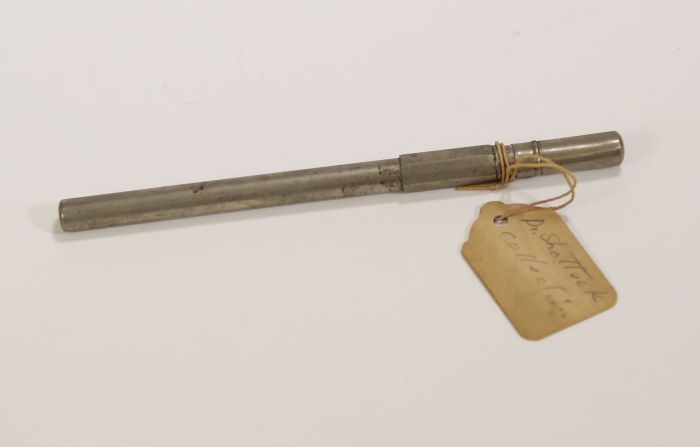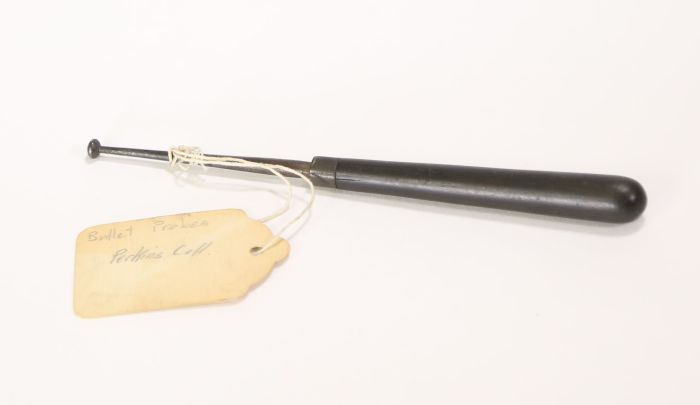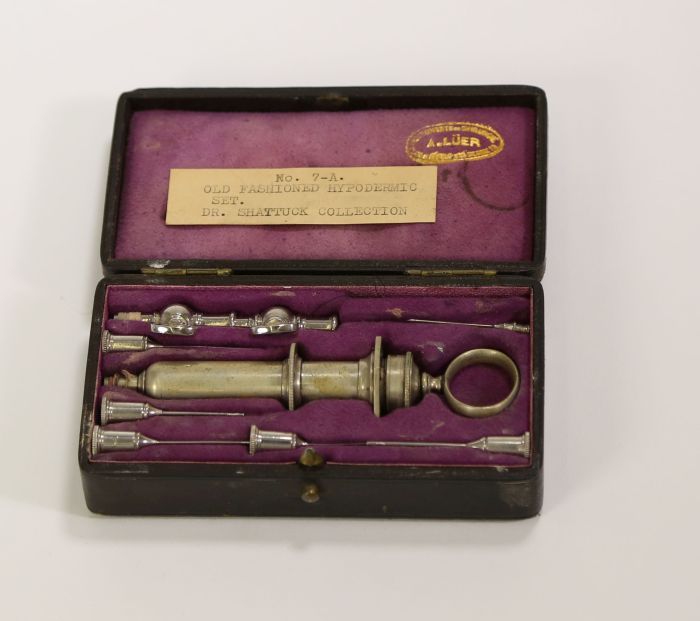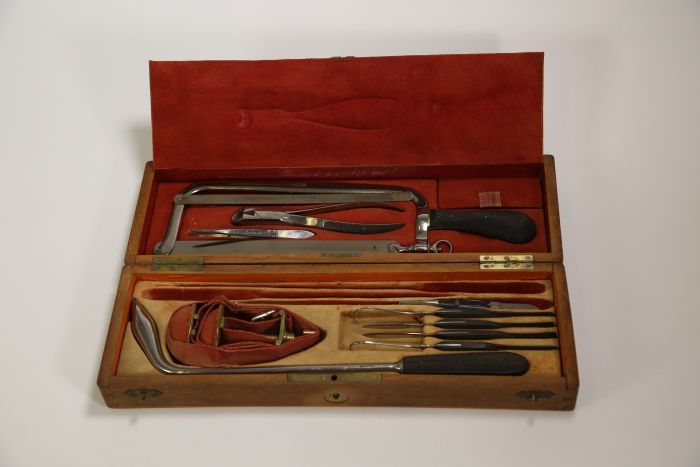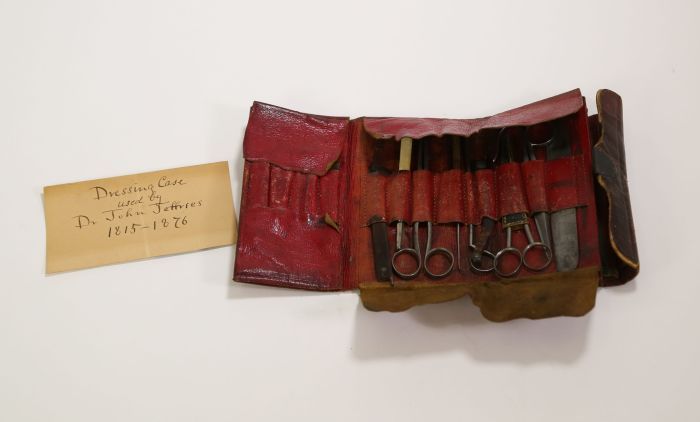The Everyday
Many of the objects found in this project represent the tools that most 19th-century physicians would have used regularly. These objects can be split into three primary categories: diagnostic instruments, like stethoscopes and thermometers, instruments for medical treatment, like syringes and lancets, and surgical instruments, like scalpels and tourniquets.
The first stethoscope was invented by Rene Theophile Hyacinthe Laënnec (1781–1826) in 1816. Laënnec's stethoscope was monaural—designed for one ear—and looked like a hollow wooden tube. The instrument evolved over time to become the binaural stethoscope—designed for two ears—that we are familiar with today. This stethoscope head could have been part of a collapsable monaural stethoscope or a binaural stethoscope.
Mercury thermometers, which were invented in 1714 by Daniel Gabriel Fahrenheit, were widely used for medical purposes until the 21st century. Early medical thermometers were about a foot long and cumbersome to transport, and could take twenty minutes to get an accurate reading. Because of this, the thermometer was not a popular medical tool until Sir Thomas Clifford Allbutt redesigned it in 1867 to make it six inches long and able to determine body temperature in only five minutes.
Bullet probes became common medical devices during the Civil War. If a bullet was lodged deep enough in the body that it could not be seen, probes like this were used to find it. After the bullet was discovered, long, thin forceps were used to remove it. In the 1860s, Auguste Nélaton created a probe with a porcelain tip. The tip would be marked by a bullet, helping the physician distinguish between bullet and bone.
The invention of the hypodermic syringe allowed for a quicker and easier method of drug delivery than what was previously possible. The first hypodermic syringes were invented simultaneously in 1853 by Alexander Wood and Charles Gabriel Pavaz. Until this invention, drugs were either delivered orally or by creating an incision in the skin.
Tourniquets have been used as far back as the fourth century BCE, but this model was developed by Jean Louis Petit in 1718. Tourniquets were used during amputations to control bleeding. The band of the tourniquet was wrapped around the limb being amputated and the screw was tightened until there was enough pressure on the limb to stop the blood flow.
In the 19th century, limb injuries often resulted in amputation. Amputation was a dangerous prospect before antiseptic practices and antibiotics, and most deaths after amputation were a result of postoperative sepsis. A typical amputation kit would include long, thin, Liston knives, a large saw, bone holding forceps, scalpels, trephines, and a tourniquet.
Many 19th century doctors carried pocket surgical cases like the one pictured here. These cases were designed for housecalls and emergency situations. The contents varied but included easily portable and frequently-used instruments, including scalpels, lancets, scissors, forceps, caustic carriers, and catheters.


